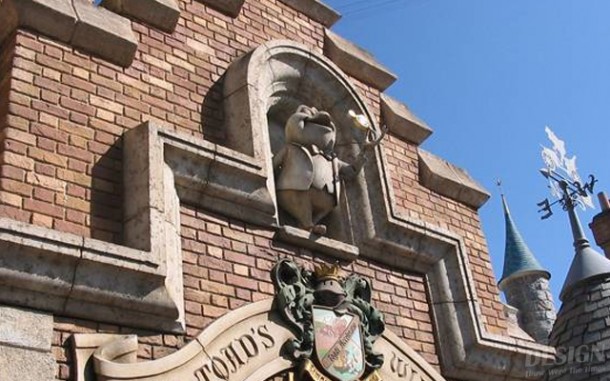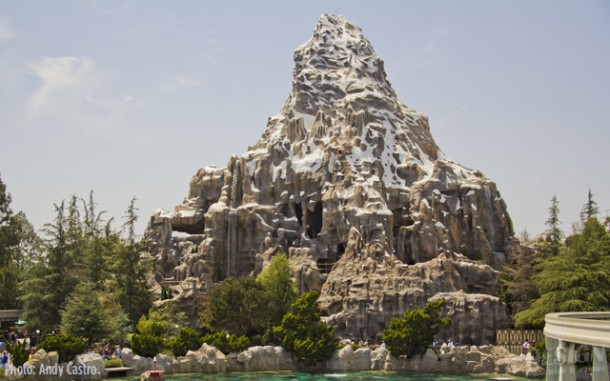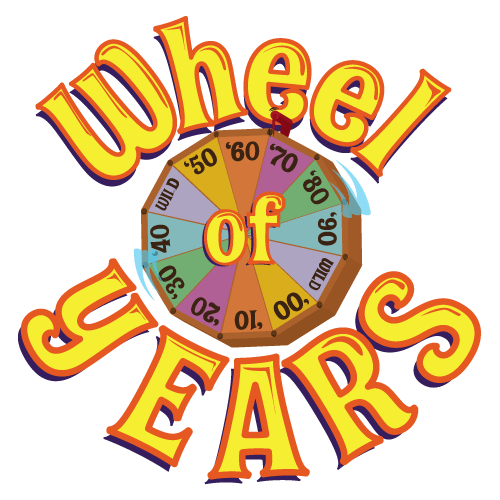Today’s Wheel of Years has stopped at 1955. Most Disneyland fans typically assume that all Disneyland attractions have always been designed by Walt Disney Imagineering (WDI), and also manufactured and installed by Disney’s own shops and construction departments. Not entirely true. Walt Disney’s original personal company, WED Enterprises, Inc. (WED) did all the original design development of Disneyland, while the Walt Disney Productions Studio Machine Shop both built and contracted the attraction rides. Roger Broggie Sr., Walt’s mechanical engineering guru, directed all the manufacture of the Disney-built rides, while outside contractors built a number the original 1955 rides.
Arrow Development, then located in Mountain View California, engineered, built, and installed six rides; Mad Tea Party, Snow White’s Adventures, Mr. Toad’s Wild Ride, King Arthur Carousel, Dumbo Flying Elephants, and the Casey Jr. Circus Train. Every one of these attractions have operated continuously since opening day 1955, albeit with periodic improvements and re-locations. So just who was Arrow Development? Robert R. Reynolds, Northern Lights Publishing, describes the complete history of Arrow in his 1999 book Roller Coasters, Flumes, and Flying Saucers. It’s also a story of the two most influential mechanical creators in my design career, Ed Morgan and Karl Bacon.

In 1946 two World War II veterans, Ed Morgan and Karl Bacon, formed a small machine shop that they named Arrow Development. The two men built their company around the slowly growing amusement park industry. Their shop was first located at 243 Moffett Boulevard, just north of Downtown Mountain View. They started out small, building merry-go-rounds and other rides for local amusement parks. In 1953 they were contacted by Walt Disney, who was just beginning to plan a new type of amusement park, the “theme park” we all know today as Disneyland. Disney admired Arrow’s work, and hired the company to help design and build the ride systems for many of Disneyland’s original and early rides
Except for the Carousel, which was a modified 1922 Dentzel from Toronto Canada, all the other rides were prototype one-of-a-kind, which meant that all the developmental testing was to be done by our Disneyland guests! In those days, guys like Ed and Karl would build stuff before they could get the chance to make drawings in case the ride was going to be duplicated. The Mr.Toad cars are an example. Ed built the first one to show to Walt based on Disney artist Bruce Bushman’s sketch. WED then ordered twelve cars, so Ed lofted up some shop templates to cut out the metal shapes, then form and weld them up. No engineering drawings were ever made! I have Winky, the first of the twelve Mr. Toad Cars, in my dining room. The sight of Winky every morning reminds me of what wonderful guys Ed and Karl were to Disneyland’s early success.

As a side note, Ed had me fly up to Mountain View for the day in October 1959 to help Arrow design a new line of amusement ride cars for their ongoing other customers. They had a bunch of chassis bits and pieces laid out on their shop floor, including an engine, wheels, and axles. Just stuff propped up on boxes in a spatial general arrangement. I was to look at the pile of items and sketch a body to fit over the the mess, marking chalk lines on the floor in lieu of paper engineering documents. Boy was that ever fast! Everything done in a few hours. I never forgot their “quick engineering documentation” methods and used them many times later in my designs to get something built real fast. Shop guys always loved this system – they could start building the parts on the spot. No engineers, no drawings, no document control or contract approvals – just get going right now.
During a number of visits to Arrow with Roger Broggie Sr. from January 1958 thru February 1969, I was able to learn so much more about how Ed and Karl worked. Example; at Disney we typically made large engineering drawings containing multiple parts, as well as large completed assemblies. This meant that shop guys would have to do what’s called “take-offs”, thus making individual part drawings from bigger ones.
But Ed’s drafters would not only make big assembly drawings, they’d draft up little 8.5 x 11 drawings of a single part as well. These little drawings would be clipped to a clothes line over their fabrication machinery for guidance. No need for a thick set of big formal engineering drawings. Speak about direct simplicity – Ed and Karl were practical realists very aware of efficient manufacture. I used this method exclusively when I engineered and made production drawings for every project I later did for twenty years as GurrDesign, Inc. The Las Vegas jobs, like the Pirate Battle Show were all done real fast and simple using the “Ed and Karl” trick. Way more fun than the full Federal Engineering Document Protocol common at Disney and other large organizations.

After the successful debut of Arrow’s first six Disneyland rides, WED contracted Arrow for many more rides; Midget Autopia, Alice in Wonderland, Matterhorn Bobsleds and Track, Flying Saucers, It’s a Small World, Pirates of The Caribbean, Adventure Thru Inner Space, and the Haunted Mansion. After construction of the Matterhorn, Disney bought a third of Arrow Development, and moved the company to a larger plant at 1555 Plymouth Street in the North Bayshore Area. At the new location Arrow went on to develop new ride systems for Disney. Arrow also manufactured many models of the the MkVII Autopia Cars to my drawings. Arrow built a lot of Disney ride equipment for the New York World’s Fair and WDW.
Ed and Karl were always a delight to work with. When Roger Broggie Sr. would have me re-engineer their stuff that was not working right, I thought they’d be very upset. No – they welcomed my new ideas and cheerfully built new replacement items. They both were so polite and informal. Ed always wore a plaid flannel shirt, no tie ever, even polished his glasses on the shirt pocket flap. I did the same, so we were matched in habits for sure. While Roger Broggie Sr. was always the technical point man to Arrow, Admiral Joe Fowler always handled the business contract matters between Disney and Arrow. We all got along so smooth in those days. Walt wanted something, Roger would give his technical blessing, Ed and Karl would invent new ground breaking creations and manufacture them with great success.

Soon after the 1955 Disneyland opening days, Walt asked Ed and Karl “How did you boys come out on the rides”. Since Ed and Karl had done the jobs on fixed bids, they lost money on every one. “I don’t want you to lose any money on my work, I’ll cover your costs. We couldn’t have done it without you boys. What else can I do for you?” Ed replied “Nothing, it’s just been a pleasure to work with you”. Thus spoke three of the most wise and wonderful men who ever lived. What an honor to have been asked to work with all of them.



You must be logged in to post a comment.